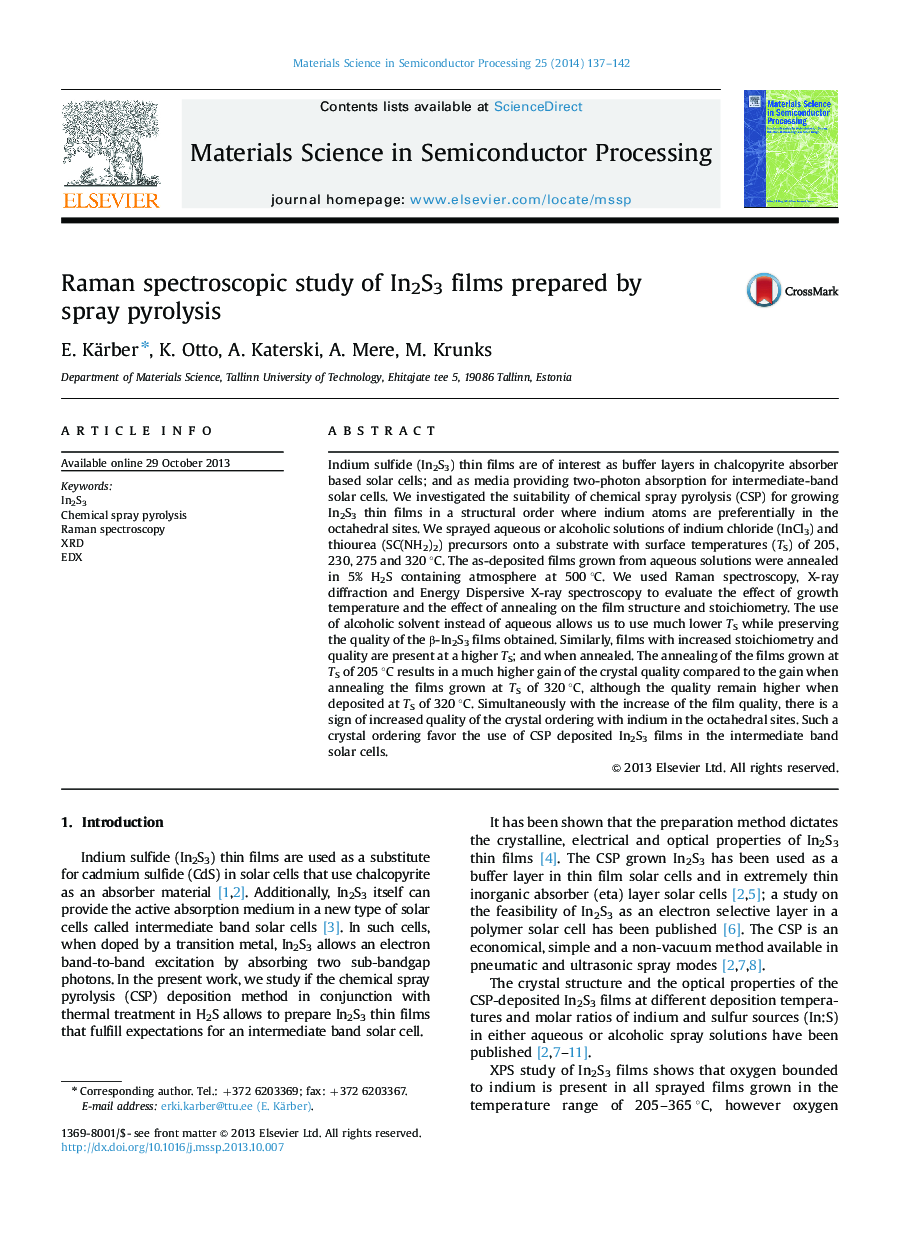| Article ID | Journal | Published Year | Pages | File Type |
|---|---|---|---|---|
| 728536 | Materials Science in Semiconductor Processing | 2014 | 6 Pages |
Indium sulfide (In2S3) thin films are of interest as buffer layers in chalcopyrite absorber based solar cells; and as media providing two-photon absorption for intermediate-band solar cells. We investigated the suitability of chemical spray pyrolysis (CSP) for growing In2S3 thin films in a structural order where indium atoms are preferentially in the octahedral sites. We sprayed aqueous or alcoholic solutions of indium chloride (InCl3) and thiourea (SC(NH2)2) precursors onto a substrate with surface temperatures (TS) of 205, 230, 275 and 320 °C. The as-deposited films grown from aqueous solutions were annealed in 5% H2S containing atmosphere at 500 °C. We used Raman spectroscopy, X-ray diffraction and Energy Dispersive X-ray spectroscopy to evaluate the effect of growth temperature and the effect of annealing on the film structure and stoichiometry. The use of alcoholic solvent instead of aqueous allows us to use much lower TS while preserving the quality of the β-In2S3 films obtained. Similarly, films with increased stoichiometry and quality are present at a higher TS; and when annealed. The annealing of the films grown at TS of 205 °C results in a much higher gain of the crystal quality compared to the gain when annealing the films grown at TS of 320 °C, although the quality remain higher when deposited at TS of 320 °C. Simultaneously with the increase of the film quality, there is a sign of increased quality of the crystal ordering with indium in the octahedral sites. Such a crystal ordering favor the use of CSP deposited In2S3 films in the intermediate band solar cells.
